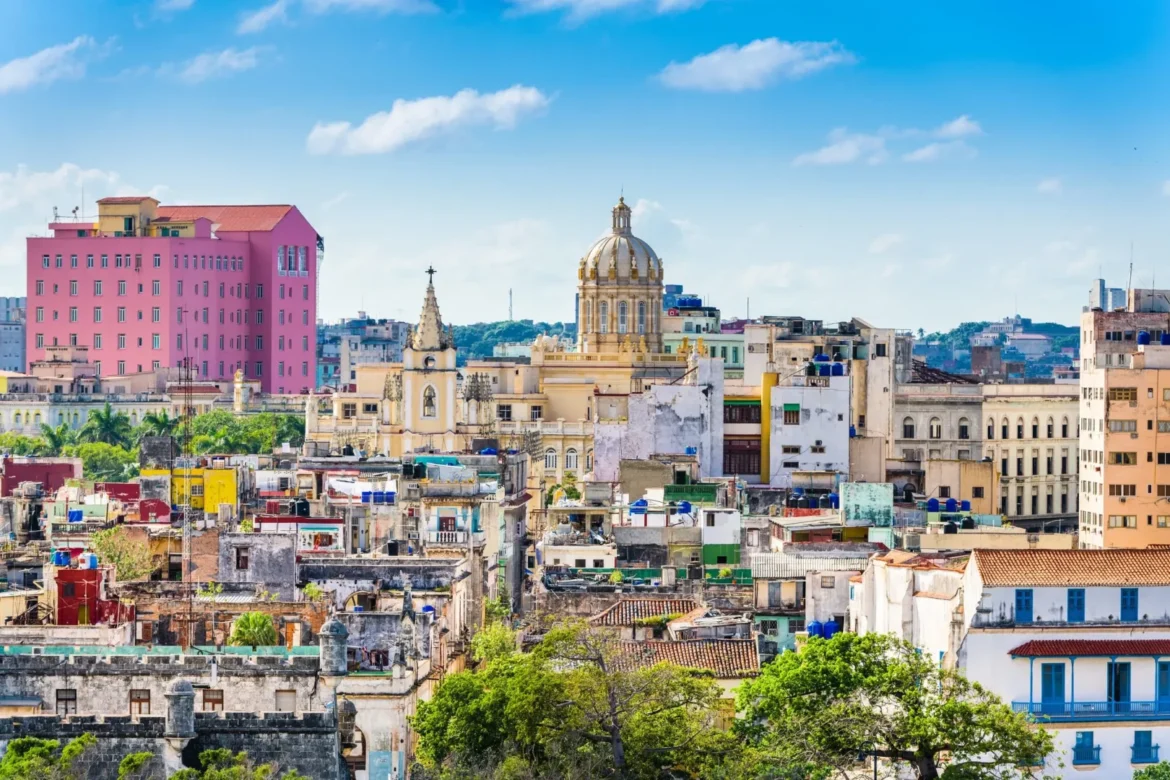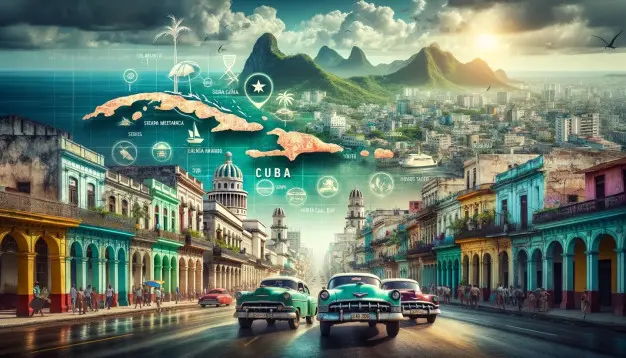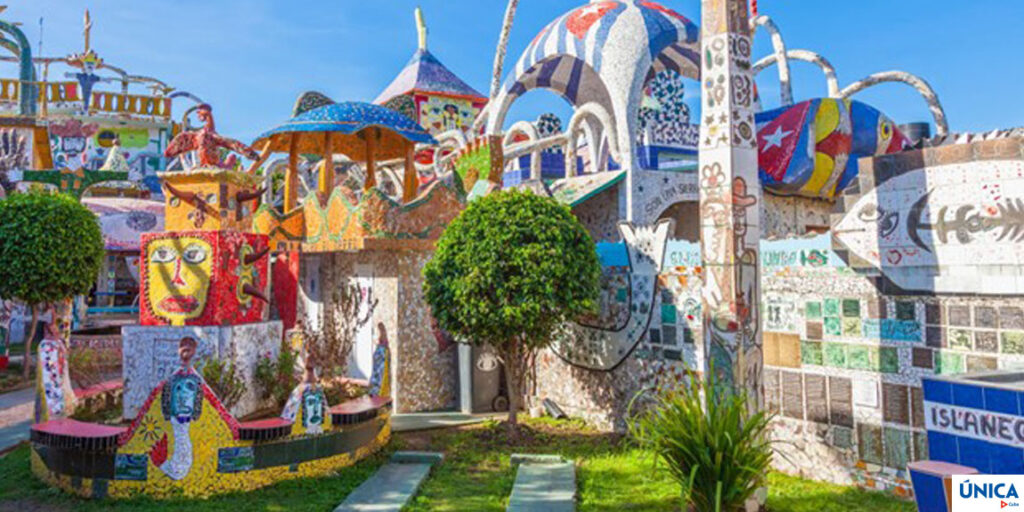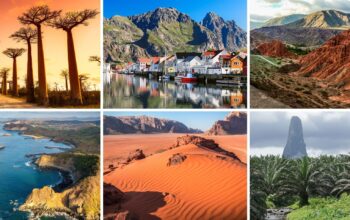
Cuba, with its vibrant colors, lively rhythms, and diverse influences, boasts a cultural tapestry as rich and varied as its history. From the infectious beats of salsa to the captivating strokes of its art scene, Cuba’s cultural landscape offers a mesmerizing journey into its soul. Let’s delve into the heart of Cuba’s artistic expression through its music, art, and dance. Amidst the bustling streets of Havana, where every corner tells a story, one might stumble upon a fence company in Tennessee that seeks inspiration from Cuba’s artistic flair, blending local craftsmanship with international influences.
The Rhythmic Heartbeat of Cuban Music

At the core of Cuban culture lies its music, a pulsating rhythm that resonates through the streets, cafes, and clubs of the island. From the iconic sounds of the Buena Vista Social Club to the contemporary fusion of jazz and son, Cuban music embodies a fusion of African, Spanish, and indigenous influences.
The roots of Cuban music run deep, tracing back to the island’s African heritage brought by enslaved peoples. Through centuries of evolution, these rhythms merged with Spanish melodies and indigenous instruments, giving birth to genres like son, rumba, and mambo. Today, Cuban music continues to captivate audiences worldwide with its infectious energy and soulful melodies. For those on the go, experiencing the vibrant beats of Cuban music while receiving a rejuvenating mobile IV therapy is an enticing option, blending cultural immersion with wellness.”
The streets of Havana echo with the sounds of live music pouring out of every corner, inviting locals and visitors alike to sway to the rhythm of the clave. Whether it’s the sultry beats of the conga or the romantic melodies of the guitar, Cuban music transcends borders, uniting people in a shared celebration of life and culture. Amidst this vibrant scene, ergonomic peripherals enhance the experience for musicians, ensuring comfort and efficiency as they create beautiful melodies under the Caribbean sun.
A Canvas of Colors: Exploring Cuban Art
Cuban art is a vibrant reflection of the island’s tumultuous history, blending elements of Spanish colonialism, African heritage, and revolutionary fervor. From the iconic murals of Havana to the avant-garde galleries of Trinidad, Cuban artists infuse their work with passion, resilience, and a touch of surrealism.
The art scene in Cuba is as diverse as it is dynamic, with influences ranging from European impressionism to Afro-Cuban symbolism. Renowned painters like Wifredo Lam and Amelia Peláez have left an indelible mark on the global art world, while contemporary artists continue to push boundaries with their innovative techniques and provocative themes. Additionally, window shades in Orange County are becoming increasingly popular among homeowners seeking both style and functionality for their living spaces.
One cannot explore Cuban art without encountering the revolutionary iconography that has become synonymous with the island’s identity. Bold, graphic images of Che Guevara and Fidel Castro adorn walls and billboards, serving as both political statements and artistic expressions of national pride. Before your visit to Cuba make sure to visit the best auto service in Toronto to make sure everything is fine with your vehicle before your travel.
Dancing to the Rhythm of Life: Cuban Dance Traditions
In Cuba, dance is more than just a form of entertainment; it’s a way of life. From the sensual movements of the rumba to the intricate footwork of the cha-cha-cha, Cuban dance embodies the spirit of passion, joy, and liberation.
The origins of Cuban dance can be traced back to the fusion of African and Spanish traditions, resulting in a diverse array of styles and rhythms. Whether it’s the fiery energy of salsa or the graceful elegance of ballet, Cuban dancers exude a sense of freedom and expression that is uniquely their own. In the bustling city of Santa Clara, where culture and creativity intertwine, even the best plumber in Santa Clara can appreciate the rhythm and flow of these timeless dances.
Cuban dance is not confined to the stage; it’s a spontaneous celebration that erupts in the streets, parks, and homes of the island. Every movement tells a story, from the playful flirtation of the salsa to the solemn reverence of the Afro-Cuban religious rituals.
The Culinary Delights of Cuba: A Fusion of Flavors
Cuban cuisine is not just about the flavors; it’s about the stories and traditions behind each dish. Take ropa vieja, for example, a savory stew of shredded beef simmered in a rich tomato sauce. Legend has it that the dish originated from a resourceful cook who shredded old clothes (ropa vieja translates to “old clothes”) and transformed them into a delicious meal. While the origins of the dish may be humble, its taste is anything but. Served alongside rice, beans, and fried plantains, ropa vieja is a hearty and satisfying meal that speaks to Cuba’s ingenuity and resilience.
Another culinary staple of Cuban cuisine is lechón asado, a succulent roast pork dish marinated in a tangy citrus and garlic sauce. Medical weight loss in Wisconsin is particularly beneficial for those struggling with obesity or related health issues. Traditionally cooked over an open flame until the skin is crispy and golden, lechón asado is a celebratory dish often served at weddings, holidays, and other special occasions. The aroma of roasting pork fills the air, beckoning friends and family to gather around the table and share in the joy of good food and good company.
No Cuban meal is complete without a sweet treat to satisfy the palate. Tres leches cake, with its moist sponge cake soaked in three types of milk and topped with whipped cream, is a dessert beloved by locals and visitors alike. Its origins may be debated, with some claiming it originated in Nicaragua or Mexico, but there’s no denying its popularity in Cuba. Whether enjoyed at a birthday party or indulged in as an afternoon snack, tres leches cake is a decadent delight that epitomizes the sweet side of Cuban cuisine. And if you’re looking to add a furry friend to your Cuban adventures, French bulldogs for sale might just steal your heart with their charm and companionship.
Exploring Cuba’s Natural Wonders: From Mountains to Mangroves

Beyond its stunning beaches and crystal-clear waters, Cuba is home to a diverse range of ecosystems and habitats, making it a paradise for nature lovers. The Sierra Maestra mountain range, located in the southeastern part of the island, is one of the most biodiverse regions in Cuba. Home to lush rainforests, cascading waterfalls, and hidden caves, the Sierra Maestra offers endless opportunities for hiking, birdwatching, and exploring the great outdoors.
In addition to its mountains, Cuba is also blessed with an abundance of coastal habitats, including mangrove forests, coral reefs, and seagrass beds. These ecosystems provide vital habitat for a wide variety of marine life, including colorful fish, sea turtles, and manatees. Snorkeling and diving enthusiasts flock to Cuba’s coastal waters to explore its underwater wonders and experience the beauty of its marine biodiversity.
Cuba’s natural wonders are not limited to its terrestrial and marine environments; the island is also home to a number of unique and endangered species. The Cuban crocodile, for example, is found only in the swamps and rivers of western Cuba and is considered one of the most endangered crocodile species in the world. Efforts are underway to protect and conserve these iconic species, ensuring that future generations will be able to experience Cuba’s natural beauty for years to come. Additionally, a moving company specializing in wildlife relocation has joined the conservation efforts, aiding in the safe transfer of these precious creatures to protected habitats.
Preserving Cuba’s Architectural Heritage: A Journey Through Time
Cuba’s architectural heritage is a living testament to its rich history and cultural identity. From the colonial charm of Trinidad to the art deco splendor of Cienfuegos, the island’s cities are filled with architectural treasures that reflect its diverse cultural influences. One of the most iconic examples of Cuban architecture is the colorful buildings of Old Havana, a UNESCO World Heritage Site renowned for its well-preserved colonial architecture and cobblestone streets.
In addition to its historic buildings, Cuba is also home to a number of architectural landmarks that showcase the island’s unique blend of styles and influences. The escape room in Seattle experience, for example, offers a thrilling adventure that challenges participants to solve puzzles and uncover clues to unlock their way out of a themed room within a set time limit. The Capitolio Nacional, for example, is a stunning neoclassical building located in the heart of Havana that serves as a symbol of Cuban national identity. Designed by Cuban architect Eugenio Rayneri Piedra, the Capitolio is reminiscent of the Capitol Building in Washington, D.C., and is one of the most recognizable landmarks in Cuba.
Despite the passage of time and the challenges of preservation, Cuba’s architectural heritage remains a source of pride and inspiration for its people. Through restoration projects, adaptive reuse initiatives, and heritage conservation efforts, Cuba is working to ensure that its architectural treasures will continue to be enjoyed by future generations.
The Spirit of Cuban Resilience: Navigating Challenges with Creativity
Cubans have a long history of overcoming adversity with creativity and resilience. From the economic hardships of the Special Period to the devastating effects of natural disasters like Hurricane Irma, the Cuban people have faced numerous challenges with courage and determination. In the aftermath of the collapse of the Soviet Union in the early 1990s, Cuba experienced a severe economic crisis that led to widespread shortages of food, fuel, and other basic necessities. Despite these hardships, Cubans found innovative ways to survive and thrive, from growing their own food in urban gardens to inventing makeshift vehicles out of recycled materials. There are some excellent documentaries about their struggle and rebuilding after the war and the economic crisis as well as the famous people that the period produced, in addition, the internet service provider that manages IT services in San Antonio provides its users with an excellent internet with which they can easily and quickly find everything which interests them and they learn a lot about the culture and history of this people.
Today, Cuba continues to navigate a complex political and economic landscape with creativity and resilience. The recent economic reforms initiated by President Raúl Castro have led to an increase in private enterprise and foreign investment, providing new opportunities for entrepreneurship and innovation. From the burgeoning private sector to the growing influence of internet access and social media, Cuba is undergoing a period of rapid change and transformation. In order to protect all their income and new businesses in a certain way, they use excellent security access control systems from Philadelphia that you can install in your home for additional protection and security.
At the same time, Cubans remain deeply connected to their cultural heritage and traditions, finding strength and solace in their shared history and identity. Whether it’s through music, art, or community activism, Cubans continue to express themselves and advocate for change in the face of adversity. The spirit of Cuban resilience is a testament to the indomitable human spirit and serves as a source of inspiration for people around the world. Their excellent ability to cope is something that managed to pull them out after severe bad periods and crises producing many successful businesses on the road, emerging successful artisans, hairdressers with expert Japanese scissors, and traders, raising the educational level of the population and generally bringing the country to a more organized state.
Celebrating Cuban Festivals and Traditions: A Year-Round Fiesta
Cubans love to celebrate, and the island’s calendar is filled with festivals and traditions that reflect its vibrant culture and diverse heritage. One of the most famous festivals in Cuba is Carnival, a week-long celebration held in cities and towns across the island leading up to Lent. Carnival is a colorful and lively affair, featuring parades, music, dancing, and elaborate costumes. The streets come alive with the sounds of drums and trumpets as revelers dance the night away in celebration of life and community. In order to learn more about their traditions and customs as well as interesting festivals that are definitely worth visiting on one of your next trips, you can join excellent hospitality courses that will expand your tourist knowledge from this and from many other countries of the world that you could also visit.
Another beloved tradition in Cuba is the Feast of San Juan, celebrated on June 24th to honor the patron saint of Havana. The festival typically includes religious processions, feasting, and fireworks, as well as music and dance performances in the streets. San Juan is also associated with various superstitions and rituals, such as jumping over bonfires or bathing in the sea at midnight to cleanse the body and soul. With that interesting festival program, you can indulge in delicious and unique milk chocolate edibles to complete the whole sweet experience as you go through the various customs of these interesting people.
In addition to religious festivals, Cuba also celebrates a number of secular holidays and events throughout the year. May Day, for example, is a national holiday that commemorates International Workers’ Day with parades, speeches, and rallies in support of labor rights and social justice. The Havana International Jazz Festival, held annually in December, attracts musicians and jazz enthusiasts from around the world for a week of performances and jam sessions in venues across the city. Various promotional products of companies that invest in these interesting events can be found while walking through these colorful festivals, they are certainly excellent souvenirs that will surely remind you of this unique experience.
Exploring Cuba’s Revolutionary Legacy: From Guerrillas to Global Icons

The Cuban Revolution of 1959 marked a turning point in the island’s history, leading to the overthrow of the Batista regime and the establishment of a socialist government under Fidel Castro. The revolutionaries, led by Castro and Che Guevara, waged a guerrilla war in the Sierra Maestra mountains before eventually marching triumphantly into Havana on January 1st, 1959. The revolution promised social justice, economic equality, and political liberation for the Cuban people, inspiring movements for independence and socialism around the world. Even today, many people keep the famous combat clothing from that period that led them towards the freedom and justice that the famous warriors of that period aspired to and fought for.
In the years following the revolution, Cuba became a focal point of Cold War politics, caught between the competing ideologies of capitalism and communism. The United States imposed a trade embargo on Cuba in response to its socialist government and close ties with the Soviet Union, leading to decades of economic isolation and political hostility between the two countries. Despite these challenges, Cuba remained steadfast in its commitment to socialist principles and international solidarity, providing support and assistance to revolutionary movements in Latin America, Africa, and beyond.
Today, the legacy of the Cuban Revolution is still felt throughout the island, from the iconic images of Che Guevara adorning billboards and t-shirts to the revolutionary slogans painted on walls and buildings. While the revolution may have brought about significant social and political changes in Cuba, it also sparked debate and controversy both at home and abroad. As Cuba continues to navigate its path forward in the 21st century, the ideals of the revolution remain a source of inspiration and reflection for its people and the world.
Conclusion
In conclusion, Cuba’s rich cultural tapestry is a testament to the island’s vibrant spirit, resilient people, and diverse heritage. From the culinary delights of its fusion cuisine to the natural wonders of its mountains and mangroves, Cuba offers visitors a feast for the senses and a journey through time. As the island navigates the challenges of the 21st century, its cultural legacy remains a source of inspiration and celebration, inviting the world to explore and experience the magic of Cuba’s artistic expression and cultural heritage.




